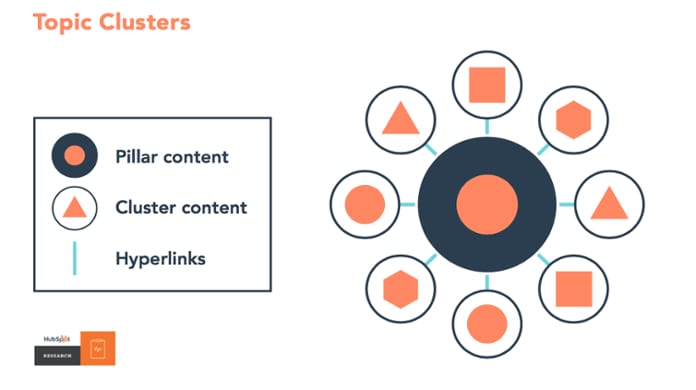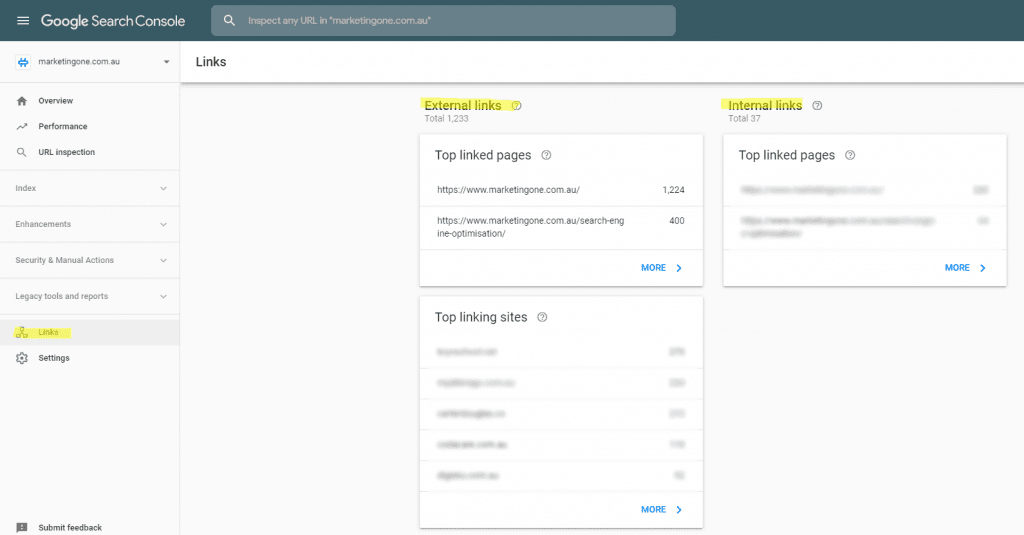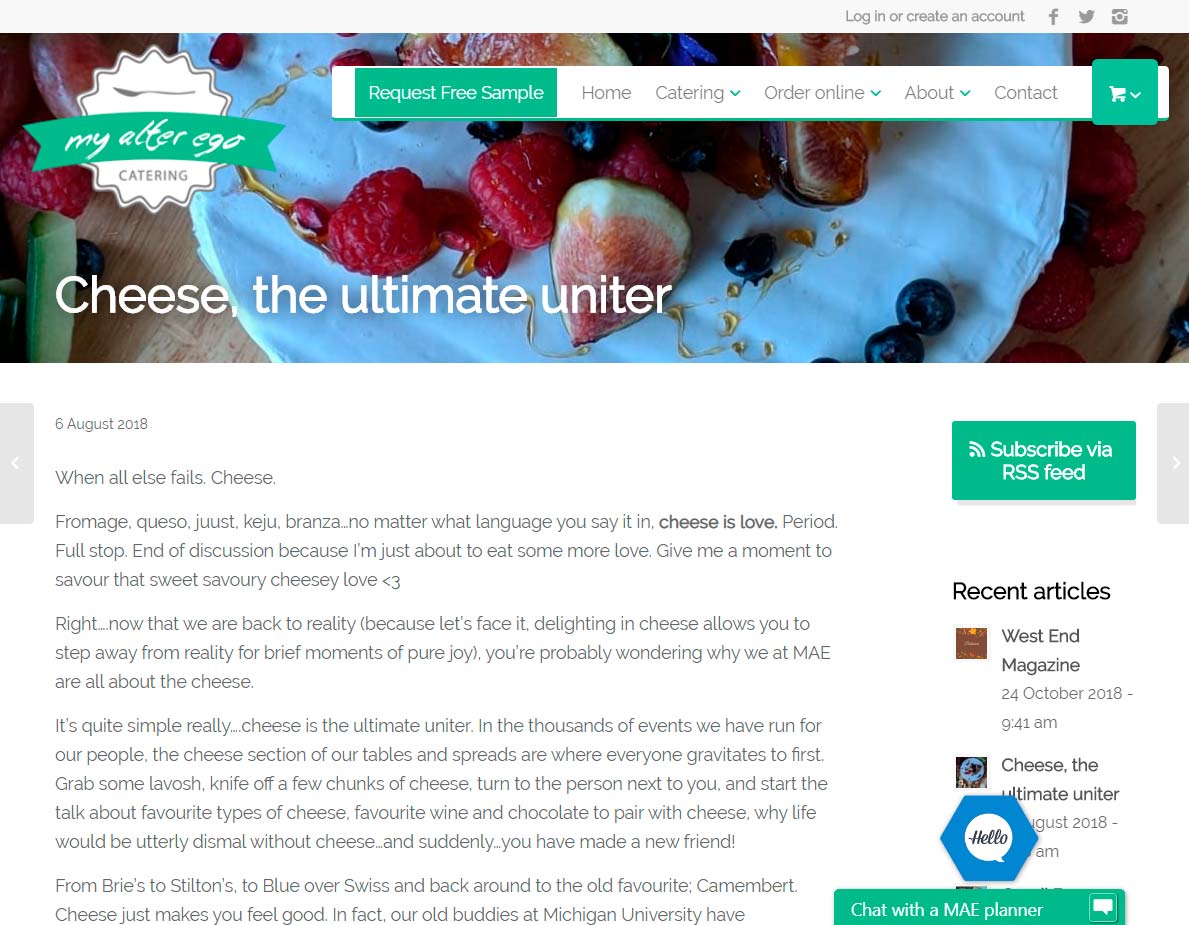The clients we tend to work with typically have a pre-existing understanding around the importance of link building – but, this importance tends to be placed on backlinks to their site, while not understanding the inherent strength of what links on their own website, to pages on their own website, could do for them. This is often referred to as internal linking.
Over the years, we have helped hundreds of clients improve their overall site and internal link structure. Now, we turn over this little known strategy to help improve your overall rankings on Google and user experience. We understand that not everyone has the most technical know-how. However, this guide aims to identify the potential pitfalls you may encounter, which could potentially negatively impact your SEO efforts.
Simply put, it’s a clickable word or assortment of words (also referred to as anchor text) on a web page that when clicked redirects you to a different page on identical site.
It is worth noting that internal links differ from external links, which are links/anchor texts that redirect the visitor to a third-party website or a website on a different domain. Although external links are incredibly powerful and still relevant in SEO today, they won’t facilitate the distribution of link authority throughout the various pages on your website.
Internal linking in plain HTML code:
If you’re still uncertain or have further questions as to why internal linking is a must-do in any SEO strategy, feel free to drop us an email.
Your high-priority or ‘money’ pages such as your home or core service page ought to have a high volume of natural internal linking back to them. This allows any link juice or domain authority to flow throughout the various pages of your website while also creating an easy to follow structure for Google to crawl. Google’s crawlers or commonly referred to as bots will then be able to crawl your website seamlessly, bouncing from one page to another thanks to your new internal link strategy. This can be fantastic for new websites or pages of importance to you because it means that they get indexed quicker and begin appearing on the SERPS faster.
When you use internal links, you send each user and Google bots to a different, relevant page. Google will then get an understanding, and as will the user, as to the context of the page when you use relevant and descriptive anchor texts.
This means it’s preferred to explain the page you’re linking to with a keyword instead of one thing generic like “click here”.
An example:
Marketing One offers Brisbane SEO to businesses of all sizes – click here to read more.
Marketing One offers Brisbane SEO to businesses of all sizes.
The words “click here” don’t tell bots what content is going to be on the page you’re linking to, whereas “Brisbane SEO” clearly identifies the context of the linking page.
Using an internal link strategy on your news or blog pages helps you established what is called topic clusters together with your content. You’ll have one core page (a pillar page), with different posts that contain content on the same theme however at an additional granular level (cluster posts) – The pillar can link to every cluster and vice versa; this is called internal linking.
Google can recognise the relevant topic in detail, establishing yourself as an authority on the topic with the search engine. Thus Google higher understands what your web site is regarding and it can as a result of this rank you higher for keywords relating to the topic.

The majority of backlinks are directed towards a website’s homepage, giving the highest authority, or ‘link juice’ to the page. But, by utilising strategic linking strategies, you can carry the weight of your homepage across to various other inner pages as well. This leads to improves rankings for these pages as well. Furthermore, this strategy allows for fewer campaign resources, less time spent developing backlinks etc. the facility of the location through all the inner pages too. However, in saying this, a simple mistake such as including a ‘NoFollow’ tag in the links code can easily prevent the link juice from flowing to these pages. You should make sure all internal linking pages have a ‘Follow’ tag associated with them.
It is often best practice to use tools like Ahrefs or Majestic to discover pages on your website with the highest domain authority. These are the pages you should be looking to link from as these carry the heaviest weighting.
You can use free tools like Google Search Console (GSC) to seek out your pages with the very best quality & quantity of backlinks.
Login to Google Search Console (GSC), click on ‘links’ from the left sidebar. This will display the sites which link to you the most and which internal pages are linked too most frequent.

Use these authoritative pages to link internally to your money pages.
Not only will Google love you for creating an easy to follow site structure through the use of internal linking but so too will your visitors. Typically somebody researching a subject will have numerous follow on questions from the original topic; these all provide opportunities for you to answer your potential customer’s queries as well as provide insightful information. Furthermore, the more a visitor can find the answers on the one website, the more of an authority you will become with Google and the higher chance of the visitor becoming a client of your business/brand.

An example from one of our clients, My Alter Ego Catering (a boutique catering business), may be a news article written on the science behind cheese and how it unites the palette.
Despite the fact the news article may take you through the benefits and science behind cheese, it doesn’t answer any other questions which may be commonly searched for around the topic of catering – like once you’ve decided on your cheese preference for your platter- how do you go about pairing it with the other assortments of snacks? This article would be a perfect example where we could do internal linking to the cluster post written on the topic of catering, helping push the user along the buyer’s journey. For example, we could link to a service page which has further information on the most commonly paired cheeses.
In the end, you have helped the customer slim down what they want and carried them deeper into your websites sales journey through the clever use of interlinking. Score!
One should note that there are always instances where you absolutely must link internally, and the more you get used to doing it, the easier it will become working out how to weave the links to craft a great sales pipeline perfectly. As with everything to do with SEO, organic is the best way! So, keep it natural and organic.
This refers to our pillar and cluster structure which was discussed earlier. By providing a single source of information for the visitor, this helps maintain a low bounce rate and begins to form a relationship with the reader. Furthermore, this helps prevent the consumer from flicking back to their Google search to seek information from a competitor.
When dealing with e-commerce websites, the same universal interlinking principals can be followed. By linking between inner pages, you inform Google of the affiliation between the product or offering allowing for quicker indexability and better rankings. Once again, when writing your anchor texts, they need to be descriptive or relevant to the page being linked too. The added benefit of this is you’re usually able to provide additional context regarding the target page than what you would typically be able to do when using breadcrumbs. In return, this will improve bounce rates for your website as the time spent on target is increased as well as an increase in user engagement signals.
In reference to previously discussed topic clusters, when writing multiple blogs on an identical topic, you’re likely to share a number of the same keywords across the pages. As such, both pages can begin ranking for the same keyword, which will result in an internal competition. To navigate this issue, you can implement organic interlinking back to your main/high-priority pages- Google can then recognise the site structure and similarities and begin prioritising the ranking for the prioritised page.
Similarly, if you have a number of pages ranking for keywords better aligned to a different page, you can use internal linking to inform Google, which is the core topic to rank.
By applying the main target keyword of a page within the anchor text of all pages linking, you’re strengthening the affiliation Google has with that keyword.
As a general rule of thumb, when creating a new page or blog, to strengthen its domain authority and quickly get it ranking while you wait for external backlinks to be picked up by Google you should use internal linking.
It is quite often we see the following errors when reviewing a clients website through our SEO audits:
If you’re really struggling to identify internal link opportunities for your website, below are a few tips:
When writing a brand new post for a customer otherwise you own journal, you can do a site: query on Google after you stumble upon potential keyphrases that are relevant to you and content you’ve got already written.
Using Marketing One as an example, if I write a journal post that mentions bound terms relating to digital marketing – like “SEO”, I will search as follows:

This will bring up all pages pertaining to the search query on your website. Google will also conveniently organise the results in the form of the most relevant. Typically you should link to the most relevant page which is displayed first as Google has already signified that they are favouring that particular page in the SERPS.
This is also an excellent means of discovering new opportunities to link to a newly created page or a page with few backlinks already.
As previously discussed, you can use Google Search Console to discover which pages already have a solid amount of links going back to pages and which can be optimised better. You can use GSC as a guide for your internal link strategy efforts and ensure pages aren’t being overlinked too to ensure you eliminate internal competition for keywords.
We recommend conducting a full SEO audit of your website a couple of times a year or at least an internal linking audit to ensure no potential SEO opportunities are foregone. There is always an opportunity to improve rankings by updating anchor texts to a more relevant article as they are created to perfect your website structure. Remember, the easier your URL structure is to understand; the more Google will handsomely reward your efforts.
Sometimes you may feel compelled to seek additional opportunities to improve your strategy. However, you may not have enough content to open up these link building opportunities. In this scenario, you may need to organise additional articles or blogs for your website. In saying this, you should ensure that the content being created is not being written for the sake of creating new opportunities; rather, it should be written with the mindset of providing additional benefit to your website and potential readers. Quality and unique content will always win over old oversaturated ideas!